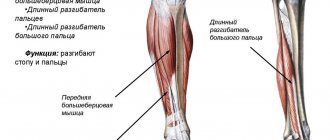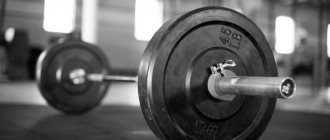Not all proteins are created equal: some—like whey protein—are better than others.
Whey protein contains a large amount of essential amino acids that are quickly absorbed by the body. Numerous studies show that during their use, strength and muscle mass increase, and excess fat is lost.
But whey proteins are more than just proteins. They have powerful biological effects. Whey protein has been shown to fight depression and lower blood pressure and blood sugar levels.
It is one of the most studied supplements today. In this article, you'll learn all about whey protein: what it is, how it works, how to take whey protein, and how it can help you achieve your fitness and health goals.
Whey protein: what is it and how is it made?
Whey protein is an all-natural protein supplement that is used for muscle gain, weight loss, strength gain, and more.
Whey protein is obtained from milk during cheese making. By curdling milk, two parts are obtained: curd (casein) and whey (liquid). The whey part of milk contains only 20% protein, which is not very convenient for use, so the whey is dried, i.e. The water is separated and ultrafiltration is carried out. After which, the amount of protein reaches 80-95%. In this way, carbohydrates (including lactose), fats, and water are separated and almost pure whey protein is obtained. It is the most popular protein among athletes. Whey was previously considered a waste product of the dairy industry for decades. Now whey protein is rated higher than egg, casein and soy, as well as other animal proteins. It has the highest biological value (1). Whey protein is globular with the main components being β-lactoglobulins (35-65%) and α-lactalbulins (12-25%). Minor ingredients include immunoglobulins (8%), serum albumin (5%) and lactoferrin (1%) (Smithers et al. 1996). This protein is a rich source of branched chain amino acids BCAA (leucine, isoleucine and valine), essential amino acids (cysteine) and peptides (Hulmi et al. 2010). High in leucine (50-75% higher than other protein sources) and plays a key role in regulating skeletal muscle protein synthesis (Chen et al. 2014). It is also rich in the amino acid cysteine, a precursor of glutathione, a non-enzymatic thiol antioxidant that is obtained through diet (Bell 2000). Glutathione plays a key role in immunity by reducing oxidative stress, regulating cellular processes whose imbalance can trigger disease (Trachootham et al. 2008).
Whey Protein Concentrate
Whey protein is produced as a by-product during the cheese production process. However, not all whey proteins are produced in the same way. Using different levels of filtration, ratios of proteins, carbohydrates and fats found in whey proteins , products can be tailored for specific purposes.
Whey protein concentrate is known as the first generation of whey protein . Modern whey concentrates typically range from 60 to 80% protein content. High quality concentrates can reach up to 89%. The rest of the product consists of 5 - 10% lactose and 1 - 3% fat.
Being the cheapest form, whey protein is the most popular whey among gym goers.
For what purposes is it used?
- Gaining muscle mass. This protein is ideal for this purpose because it contains a large amount of essential amino acids and l-leucine, which is responsible for protein synthesis (recovery and muscle building) as we said earlier;
- Weight loss or fat burning. Whey contains a low amount of calories, which is perfect for this purpose. In addition, it copes well with suppressing appetite, as well as meeting the daily requirement for protein;
- Meal replacement. People who want a healthy snack choose whey protein, most often these are girls. The advantage is that cooking is unnecessary, as well as the delicious (sweet) cocktail.
Whey Protein Isolate
Whey protein isolate is superior to whey concentrate in protein content, which reaches up to 96%, and a high concentration of essential amino acids BCAAs (26 grams of amino acids per 100 grams of protein). This protein purity is achieved through an ultrafiltration process that minimizes fat and lactose content.
The lower fat and lactose content allows for a further increase in the rate of absorption. This is why whey protein isolates are the preferred choice among bodybuilders and gym goers who are really serious about their goals. Due to the reduced amount of lactose, the isolate is also recommended for people with lactose intolerance.
Types of whey protein:
- Whey concentrate is a protein that has undergone conventional ultrafiltration and reaches 80-85% protein. The cost of such protein is quite reasonable. The absorption rate is fast. Contains a small amount of lactose, so it is not suitable for people with very poor lactose intolerance.
- Whey protein isolate is a more detailed filtration that achieves about 90-95% protein. The isolate usually does not contain lactose, which allows it to be consumed even by people with severe lactose intolerance. The absorption rate is very high. The number of calories is lower than in concentrate, and the cost is significantly higher. Its best use is on a diet.
- A mixture of concentrate and isolate. This is a very common occurrence at the moment. It turns out to be an average product in terms of characteristics and price range.
- Whey hydrolyzate is not a degree of filtration as in previous types. Hydrolyzate is a fermentation method (hydrolysis) in which protein is broken down into amino acids and peptides (several amino acids connected to each other). This makes this “protein” as easily and quickly digestible as possible, which almost does not linger in the stomach. Judging by studies, the rate of absorption of amino acids from hydrolysis is faster than from amino acids in free form. It is quite expensive and it is advisable to use it only for elite athletes, for whom every millimeter of the result is important. It also comes in different degrees of purification: concentrate or isolate.
Use of whey proteins in the production of functional drinks
MODERN EXPERIENCE AND PROSPECTS FOR THE USE OF WHEY PROTEIN PREPARATIONS IN THE PRODUCTION OF FUNCTIONAL DRINKS
Doctor of Technical Sciences, Prof. Tokaev E.S., Bazhenova E.N., Miroyedov R.Yu.
Moscow State University of Applied Biotechnology
Of particular interest in the production of functional drinks are protein preparations of animal origin - whey proteins.
Whey proteins are a group of different fractions of globular proteins, differing from each other in structure and properties, and make up 20% of all milk proteins. The main representatives of whey proteins are b-lactoglobulin (50-55%) and a-lactalbumin (20-25%). The remaining amount of serum proteins is made up of serum albumin, immunoglobulins, numerous minor proteins, such as lactoferrin, lactoperoxidase and other enzymes.
Whey powder, due to its high lactose content (70 - 85%), finds limited use in the production of functional drinks. Recently, whey ultra- and nanofiltration products—concentrates and isolates—as well as products of the enzymatic breakdown of whey proteins—hydrolysates—have become increasingly widespread.
Whey protein concentrate is obtained from sweet whey by ultrafiltration. After ultrafiltration, the whey is enriched with protein, and the amount of water, lactose and minerals in it is significantly reduced.
The lactose and fat content of protein concentrates can be reduced (with a corresponding increase in protein concentration to 90-95%) by using a nanofiltration process. The result is whey protein isolates that have not only improved functional and technological properties, but also high biological value.
Hydrolysis of whey protein isolates allows one to obtain protein hydrolysates - products with a high content of free amino acids and low molecular weight polypeptides. Depending on the content of amino acids, the molecular weight of the polypeptide fraction, the presence of di-, tri- and oligopeptides, the area of the most effective use of hydrolysates can be determined. For protein hydrolysates obtained for food purposes, important indicators are organoleptic properties and biological value.
Comparative characteristics of the chemical composition of whey protein isolate, concentrate and hydrolyzate can be found in scientific work.
The main criteria for selecting protein preparations used to create functional drinks are physicochemical characteristics, biological value and cost.
The requirements for the physicochemical characteristics of the protein used vary depending on the type of drink produced from it and the technology used. This raises the question of which physicochemical characteristics of the protein are of paramount importance. An accurate answer can only be formulated if there is a clear understanding of the structure, technological and consumer properties of the product being developed.
The most important physicochemical characteristics of protein in the production of functional drinks are its solubility, viscosity, emulsion properties and dispersibility.
Whey proteins are highly soluble, but some care must be taken when heating and chemicalizing protein solutions to avoid denaturation of the proteins, reducing their solubility. Heat treatment in the temperature range 60 - 140°C causes a significant change in the structure and solubility of whey proteins, including such relatively heat-stable ones as α-lactalbumin and β-lactoglobulin. Sensitivity to thermal denaturation is largely dependent on the pH of the solution. Proteins are most sensitive to heat treatment at pH 4.6, as well as in the range 5.8-6.2; they show minimum sensitivity at pH 2.5 - 3.5 and above 6.5.
It has been established that the solubility of milk protein preparations in water depends on the method of their preparation. The solubility of most whey protein concentrates obtained by ultrafiltration is about 90% in the pH range 3 - 8 (maximum solubility of up to 96% is observed at pH 6.5). The solubility of whey protein concentrates obtained by thermocoagulation at pH 2.5-3.0 is 78%, and at pH 3.5 - 51%. Protein isolates isolated using nanofiltration technology have a solubility of 98% at pH 3, and only 35% at pH 4.5. The main factor that significantly reduces the solubility of whey proteins at neutral pH is the presence of divalent metal ions, in particular calcium and magnesium. A decrease in protein solubility can be avoided by introducing calcium ions into the product in a bound form - in the form of proteinates. An equally effective way to regulate protein solubility is the use of hydrolysis, which increases the solubility of proteins in an acidic environment and in the presence of calcium ions. Thus, the high solubility of whey proteins over a wide range of pH values allows them to be used in drinks with different acidities, but low thermal stability limits their use in the production of finished beverages.
The viscosity of whey protein preparations depends on the conditions and technology of their production. Whey protein concentrates and isolates obtained by ultra- and nanofiltration have a relatively low viscosity (1% solution - about 110-3 Pas). In this case, an increase in the concentration of the solution to 10% entails an increase in viscosity to (3 - 5)10 Pas. The viscosity of solutions of whey protein hydrolysates is significantly lower compared to concentrates and isolates and does not exceed 1.5 -10 Pas in the solution concentration range from 1 to 10%. These properties of proteins make it possible to use them in high-calorie drinks, the recipes of which can contain up to 10% protein.
Thus, the low viscosity of aqueous solutions of whey protein preparations allows them to be used both in the production of tube feeding products and in functional drinks intended for a wide range of consumers.
When producing ready-made functional drinks with a high protein content, it is necessary to take into account their high ability to gel under certain conditions. Solutions of whey protein concentrates form gels when the protein concentration is greater than 8 - 10% and heated to a temperature of 80 - 85 0C and higher. In this case, the strength of the gel increases with increasing ionic strength and pH from 4.5 to 7.5. Whey protein isolates have exceptionally high properties. They form gels at temperatures of 56 - 58 0C and pH 7 - 9.
The emulsion properties of whey proteins are lower compared to those of caseinates. At the same time, whey protein concentrates obtained from cheese and hydrochloric acid casein whey have an emulsifying ability that is almost equal to that of egg white. Thus, in 100 ml of a 0.1% solution of protein concentrate, 34-42 g of fat can be emulsified.
Dispersibility is one of the important physicochemical characteristics of whey protein preparations in the production of instant drinks. Dispersibility depends on the method of obtaining the drug and characterizes its ability to wet, swell and subsequently go into solution. In general, whey protein isolates and hydrolysates are more dispersible than whey protein concentrates.
For many years, whey was considered a waste product, without regard to its biological value.
However, scientific research over the past 10 to 15 years has highlighted the beneficial effects of whey proteins on the human body, thereby allowing them to be classified as physiologically functional food ingredients.
Functional drinks based on and with the inclusion of whey proteins in the recipe are an excellent choice for people of all ages who value their health and strive to maintain and strengthen it.
Consumption of meal replacement drinks containing whey proteins allows you to easily and quickly, due to their high digestibility, compensate for the deficiency of essential amino acids, satisfy hunger and control body weight.
Whey protein is considered the “gold standard” protein in the nutrition of athletes and people leading an active lifestyle. The high content of branched chain amino acids (BCAA - isoleucine, leucine, valine), glutamic acid and essential amino acids helps to minimize the negative effects of heavy physical activity on the body, build muscle mass and improve athletic performance.
Recent scientific studies have shown that whey proteins significantly reduce blood pressure and blood cholesterol levels, preventing the occurrence of cardiovascular diseases.
Whey protein is the best solution for creating functional drinks for cancer patients who have difficulty eating due to nausea and lack of appetite. The organoleptic properties of whey proteins make it possible to create hyperprotein nutraceutical drinks without off-flavors.
Drinks enriched with whey protein help increase the content of glutathione, the most important natural antioxidant, in human tissues, stimulating the body's immune activity against HIV infection and cancer.
The low glycemic index of whey proteins optimizes the release of insulin, regulating blood glucose levels, thereby preventing the onset of type 2 diabetes.
Whey proteins contain separate fractions of globular proteins that perform important biological functions.
Whey protein hydrolysates have important physiological properties: higher adsorption of di- and tripeptitides in the gastrointestinal tract compared to intact proteins and free amino acids, which is most pronounced under stress, impaired intestinal function, or when it is necessary to administer large amounts of protein. Also, hydrolysates are usually used in hypoallergenic specialty food products. For example, currently in the production of hypoallergenic baby products in the USA, casein hydrolysates are predominantly used, and in Europe - whey protein hydrolysates.
Summarizing all the beneficial properties of whey proteins, it is hardly worth convincing food industry specialists of the advisability of their use. The abundance of whey protein preparations, differing in composition, properties, purpose and price, is able to satisfy any discerning consumer.
Read the full text of the scientific article, carried out on the basis of the Moscow State University of Applied Biotechnology, in the appendix.
Whey Protein Dosage
For an ordinary person who does not engage in sports, the WHO recommendation is 0.66 g. up to 0.8 gr. protein, but at the moment there is scientific evidence confirming that increased protein intake of 1.2-1.6 g. promote healthier aging (2). For people who want to achieve certain goals, we will consider below: Gaining muscle mass. Here the optimal range is 1.4-2.0 g. protein per kg. pure human muscle mass. (4) Weight loss/weight loss. Dosages here vary depending on sports activities and the desire of the person. It is better for people with strength training to maintain muscle mass to consume 3.4 grams (3), but not every person can afford this, so you need to maintain at least 1.5 grams. If a person does not play sports, then the recommendations can be reduced from 1.5 grams. at least up to 2g. squirrel. Increased strength, speed, power. Here the optimal dosage is from 2 g. up to 2.5 gr. protein. It is important not only to restore muscles, but also tendons and ligaments.











